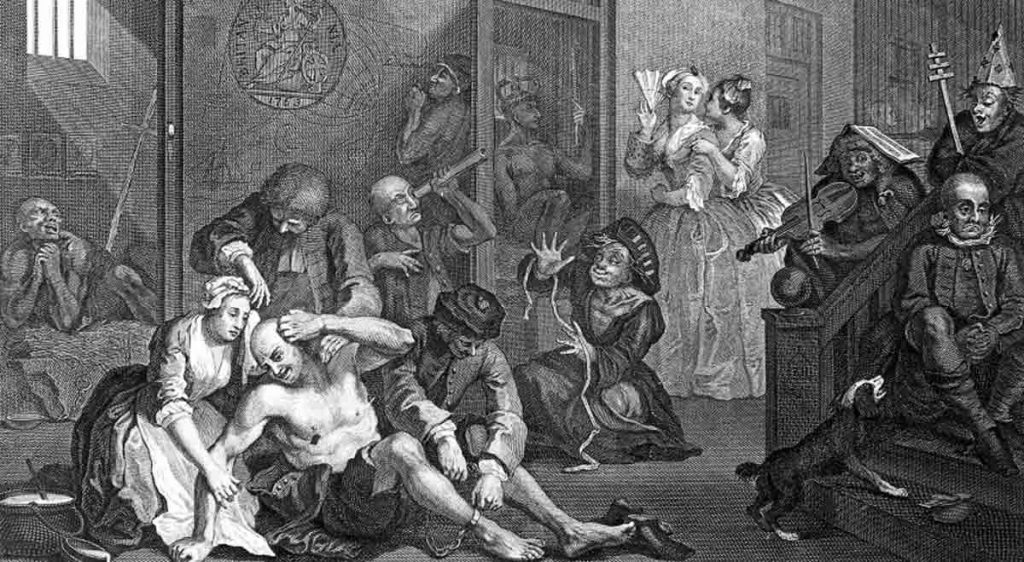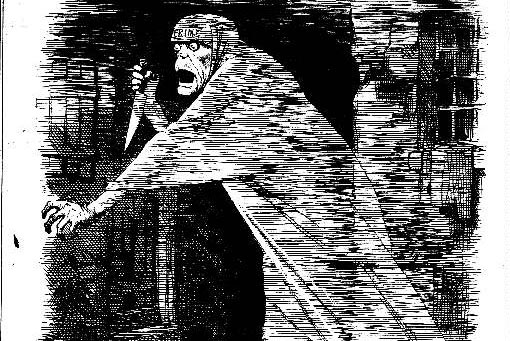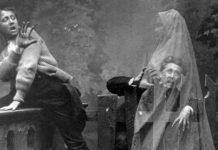ANDREW GARVEY looks at the horrors that lurked within the tragic world of mental healthcare – or the lack of it – during Victorian times.
One of many seemingly popular Victorian pastimes was worrying about whether you might one day, quite likely at the insistence of a vengeful relative, find yourself locked away in ‘the living tomb’ – a lunatic asylum, such as the original Bedlam.
In her excellent 2012 book ‘Inconvenient People: Lunacy, Liberty and the Mad-Doctors in Victorian England’ historian Sarah Wise tells the stories of people who found themselves on the wrong end of a lunacy certificate needed to have them banged up indefinitely.
The Times, editorialising in December 1829 about a situation that would remain largely unchanged until some well-intentioned but patchy reforms in 1845, said “the melancholy fact is that your thorough-going mad-doctor takes for granted that hardly anyone is sane… any one of us may be seized by a pair of ruffians, under the warrant of a mad-doctor… and be plunged for life into that hopeless prison…”
George Burrows, a ‘mad-doctor’
One such ‘mad-doctor’ was pioneering alienist (the accepted term, pre-‘psychiatry’) George Burrows. Regularly called in as an expert at hearings and responsible for committing countless now-anonymous masses to the asylum, including the one he owned, Burrows once wrote that “I consider the maniacal odour a pathogonomic symptom so unerring, that if I detected it in any person, I should not hesitate to pronounce him insane, even though I had no other proof of it.”
Yes, Burrows could smell insanity. And he trusted his nose. Apparently the state of being clinically bonkers reeks of the pretty yellow flowering toxic plant henbane (‘stinking nightshade’). It’s little wonder that Britain’s leading medical journal the Lancet compared him to seventeenth century monster Matthew Hopkins, notorious, and self-appointed Witchfinder General.
Things may have steadily improved, and Burrows’ death in 1843 can’t have hurt matters, but, in August 1858, Lloyd’s Weekly were still concerned that “it is so easy to prove that an obnoxious relative is insane; it is easier still to aggravate trivial symptoms by persistent bad treatment.”

In her book, Sarah Wise looks at one such case. In 1838, sometime journalist Richard Paternoster wrote some angry letters to his father over the elder man’s failure to release the funds Richard was owed on his yearly ill-health pension of £150. Not long after, he was attacked in his lodgings by two asylum attendants. Despite them giving him a good kicking, he managed to escape into the street where all three were arrested for their violent brawling.
Richard Paternoster finds himself in Kensington House Asylum
Richard then found himself an inmate of London’s Kensington House Asylum. In a letter to his kindly landlady, Richard wrote of the “filth, degradation and violent assaults… aggressive sexual approaches [of a female nurse]” and claimed that shortly after his arrival “the man in the next room was beaten to death by the attendant…”
With the backing of the popular press, Paternoster was a free man in 41 days. During his unusually brief stay he canvassed his fellow patients. Of the 33 he spoke to, none of whom he considered ‘mad’, 18 of them knew who had called in the mad-doctors in the first place. All 18 had been put there by relatives. That’s eight wives, four mothers, three fathers, one sister, one brother and one son had their ‘imbecile’, ‘weak-minded’ or just elderly and confused relatives banged up.
Paternoster’s own ordeal was due to his vengeful father. A surgeon, John Paternoster didn’t even have to go to the trouble of calling in the ‘mad-doctors’ since he was perfectly entitled to sign his son’s lunacy certificate himself.
More happily, Richard later sued his father, along with several other conspirators. And won.







